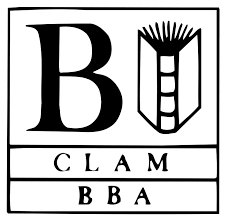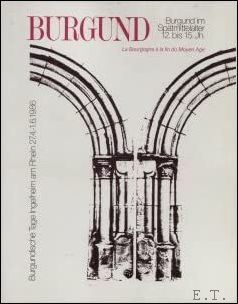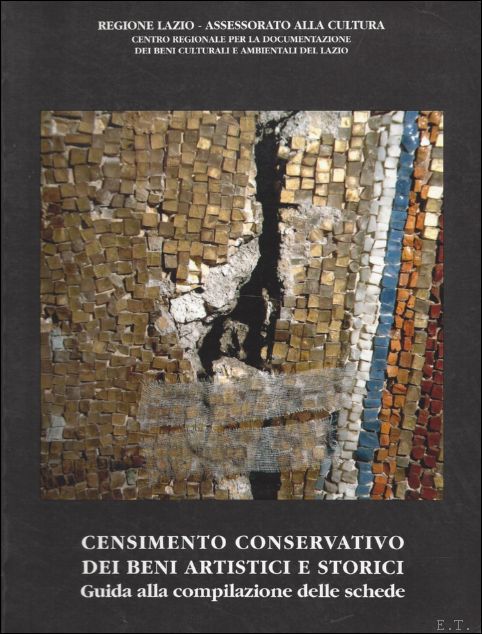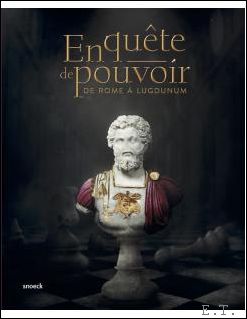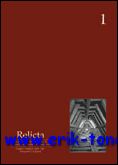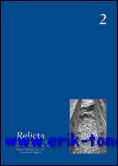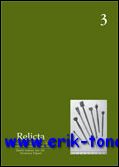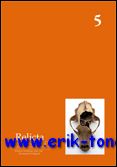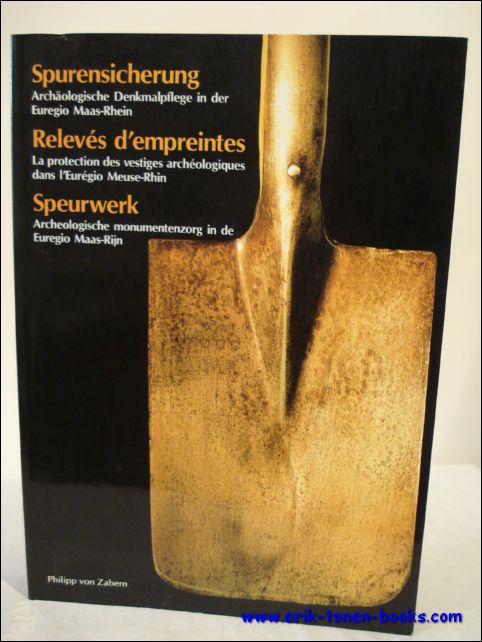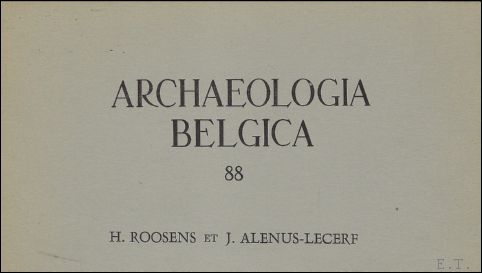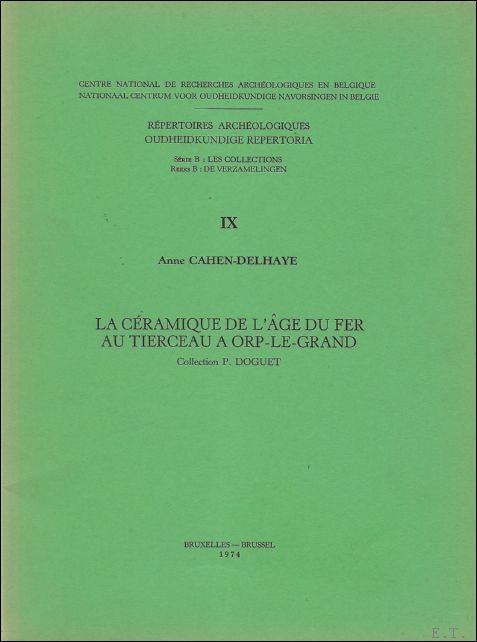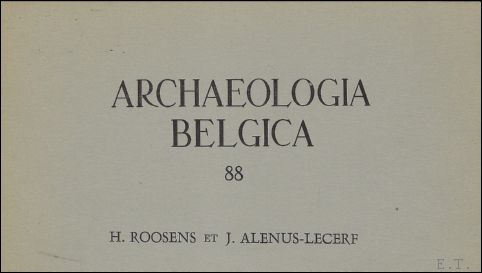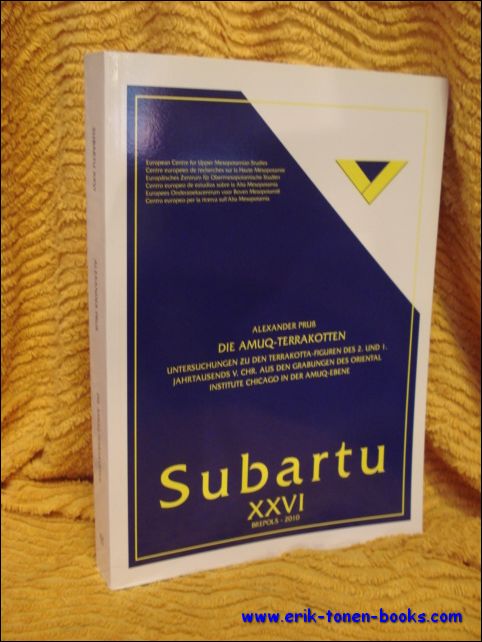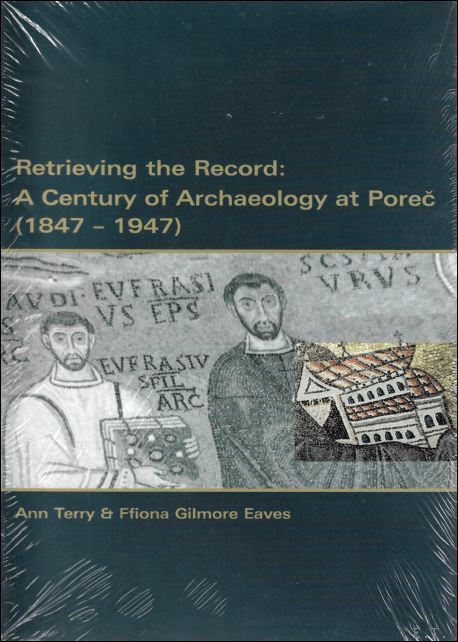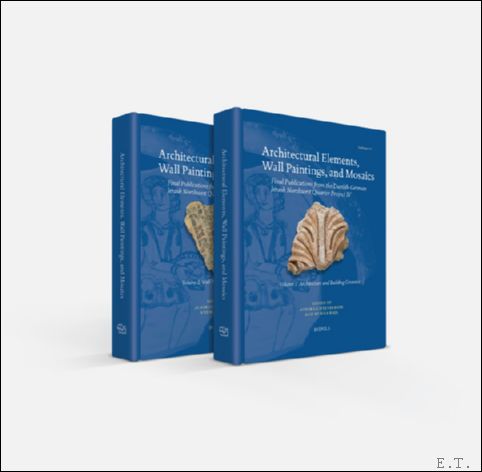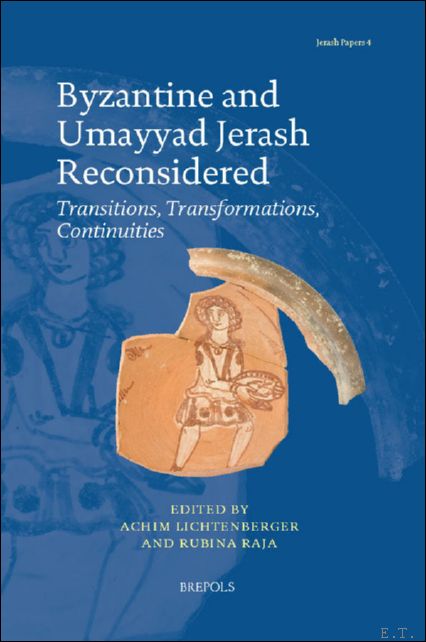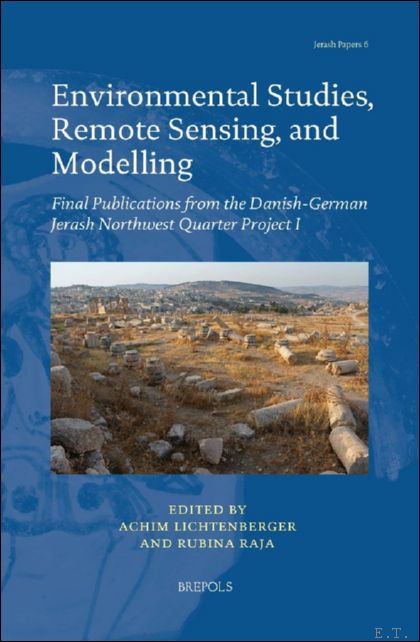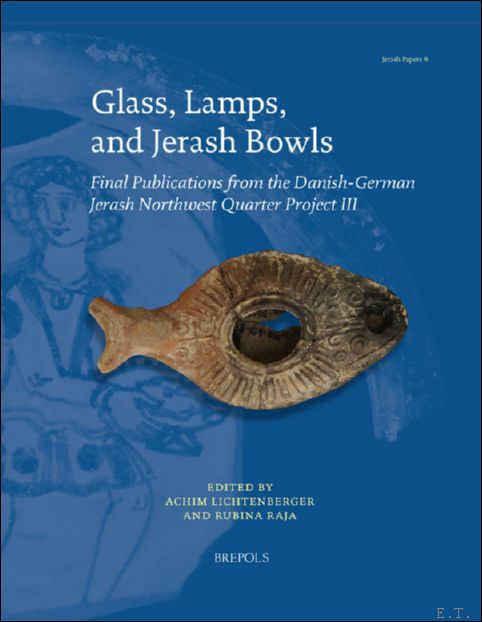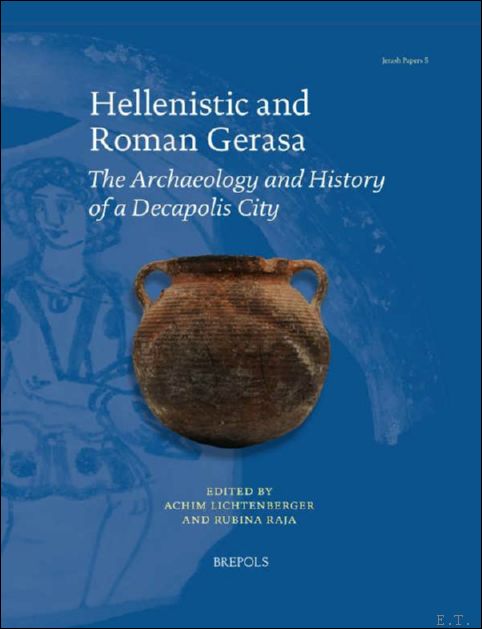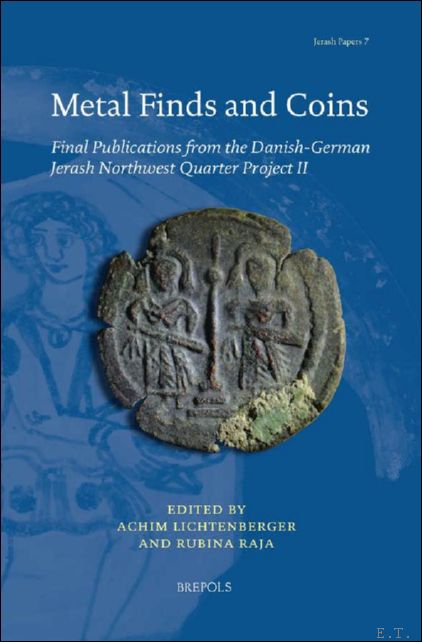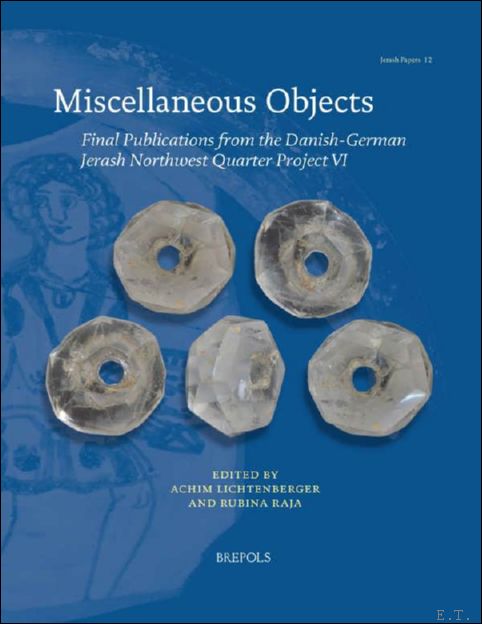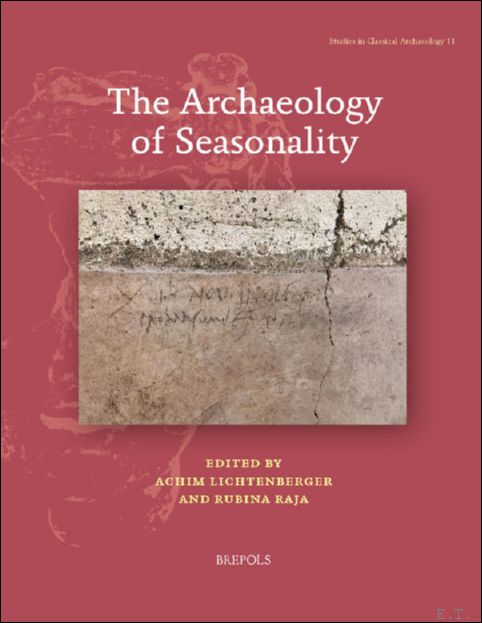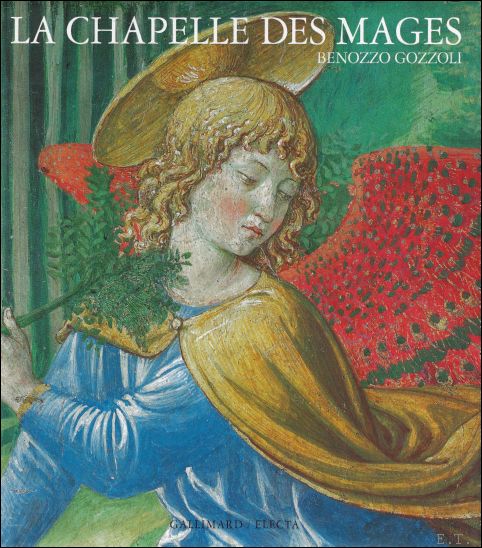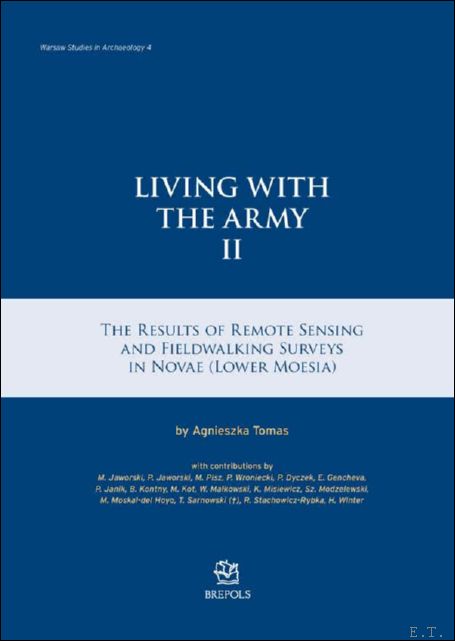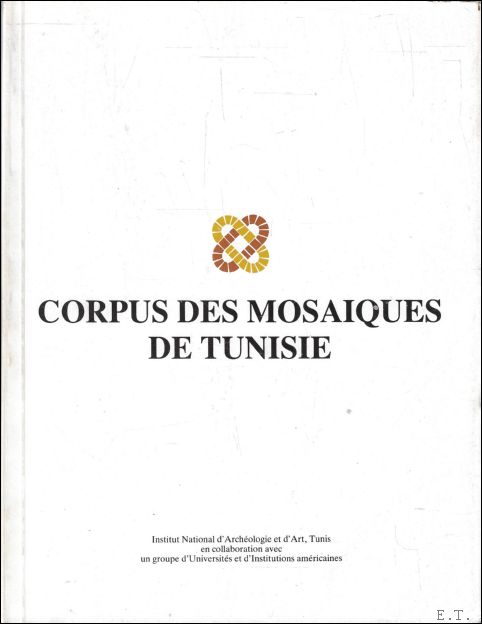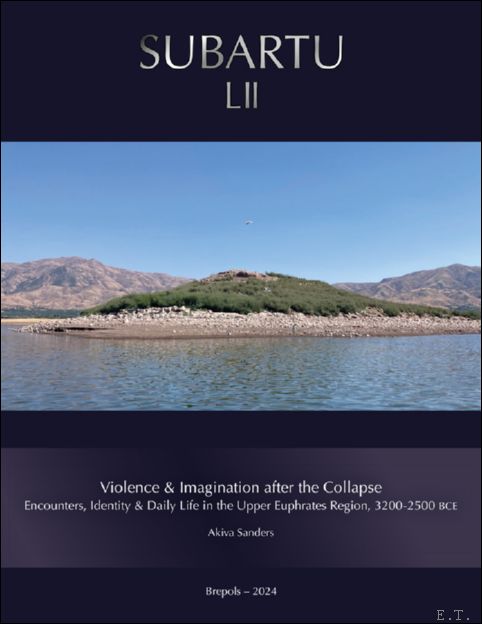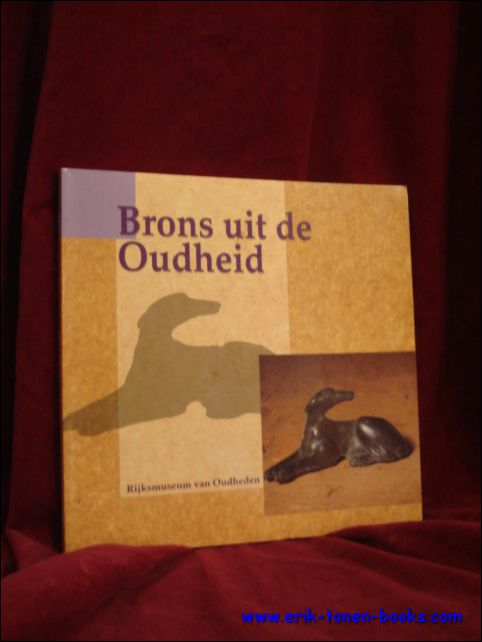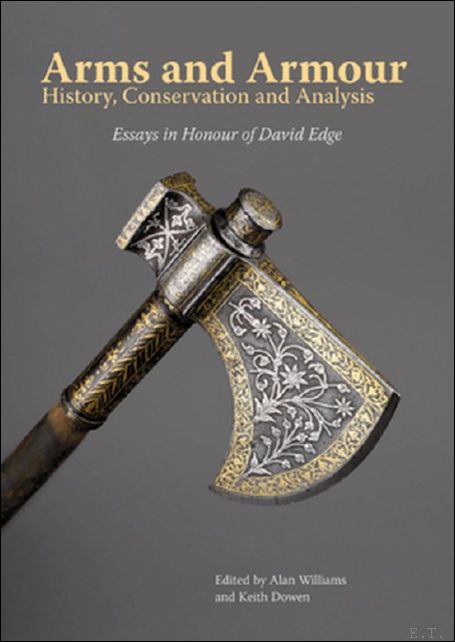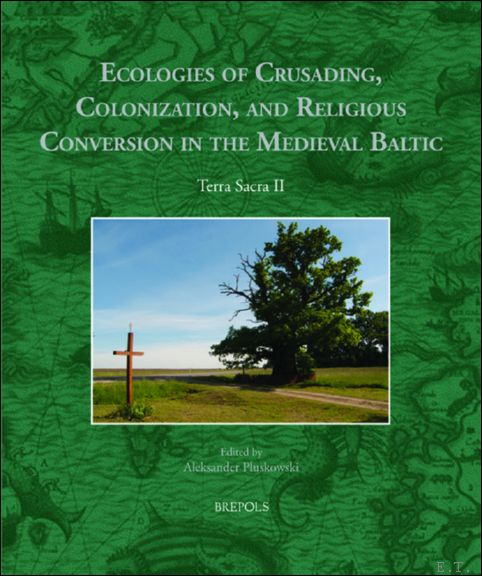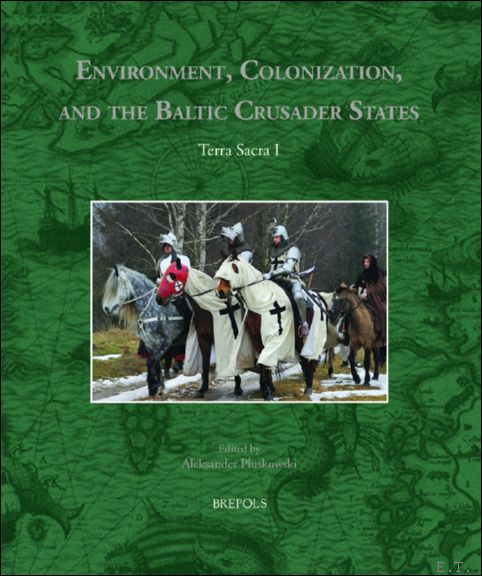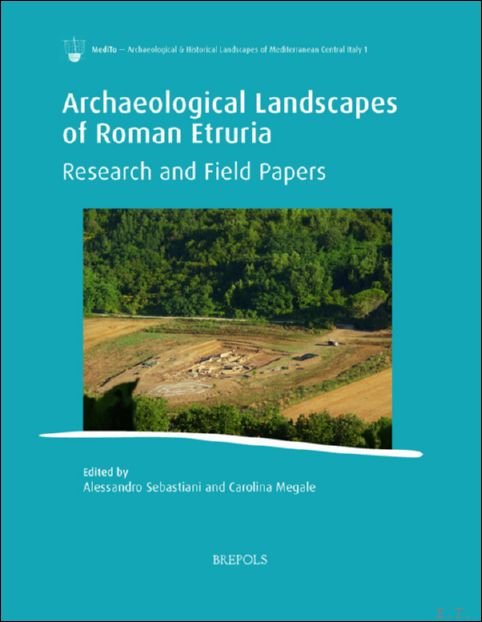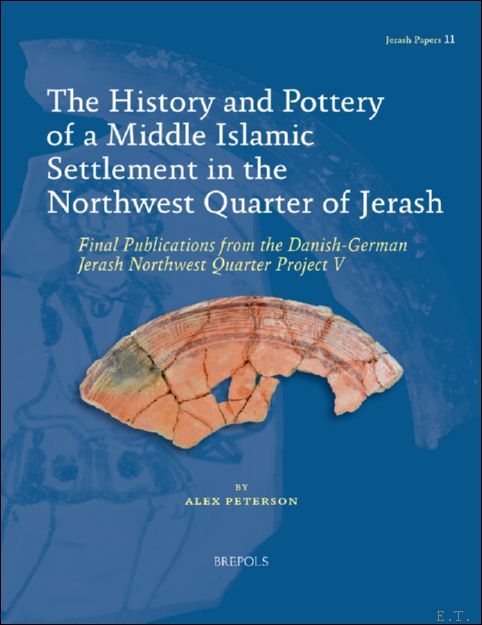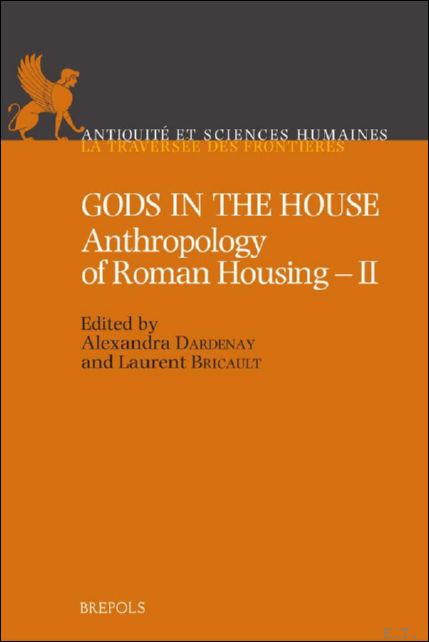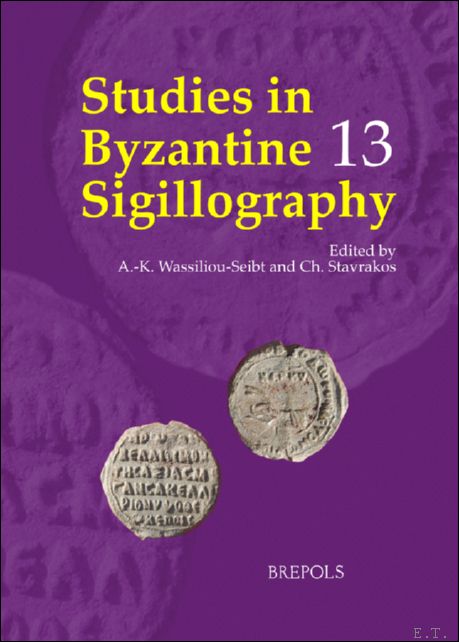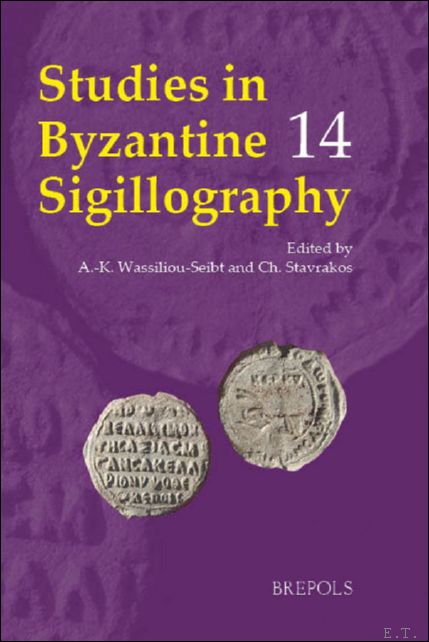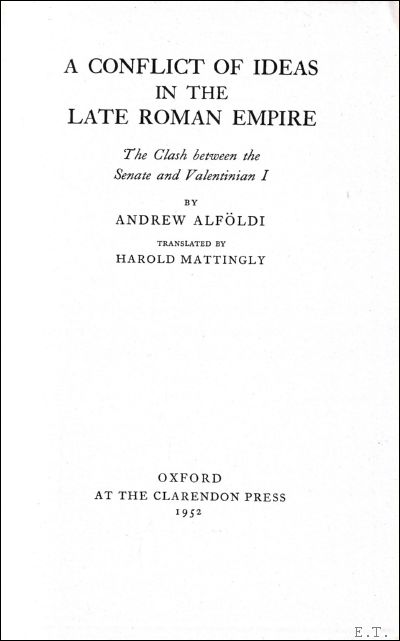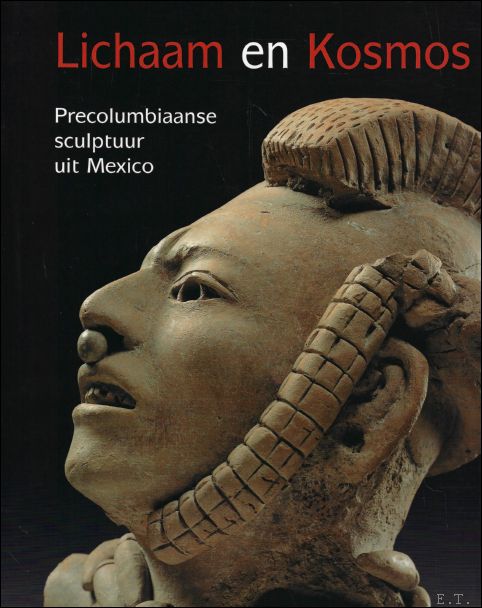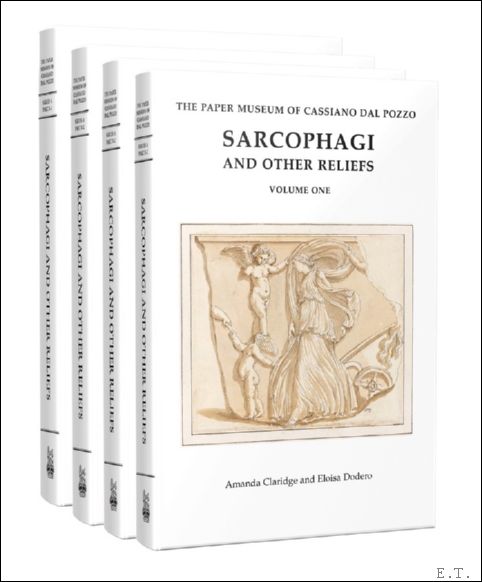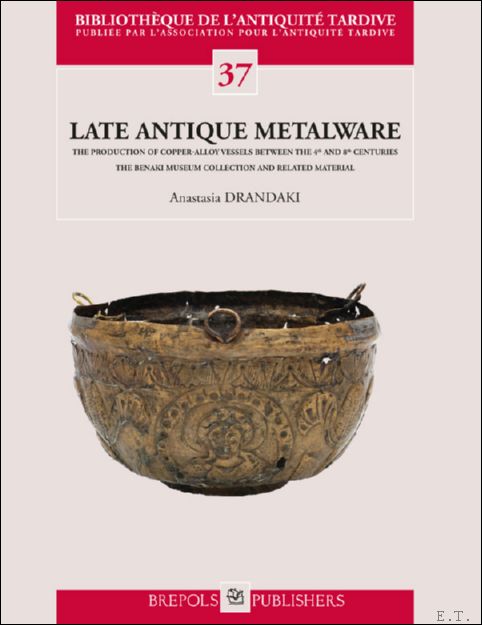Archeologie
804 livres trouvéz
--
Burgund - Burgund im Spätmittelalter 12. bis 15 Jh.
Stadt Ingelheim, 1986. Softcover, 201 pages ill.
Title: Burgund - Burgund im Spätmittelalter 12. bis...
Référence: 60440 | Prix: EUR 10.00
--
censimento conservativo dei beni artistici e storici, guida alla comilazione delle schede.
Roma, Edizoni quasar, 1993. paperback,185 pp. illustrated. ISBN: 8870970337
regione lazio assessorato alla cultura centro regionale per la documentazione dei beni culturali e ambientali del lazio.
Référence: 22427 | Prix: EUR 30.00
--
EN QUÊTE DE POUVOIR De Rome à Lugdunum
Snoeck / Musée Lugdunum, 2021. HB, 280 x 230 mm, 224 pages, 320 illustraties, Texte en Francais Exhibition catalogue. ISBN: 9789461616876
Prolongeant les thèmes de l'exposition « EnQuête de pouvoir. De Rome à Lugdunum », ce catalogue montre comment, à la fin du Ier siècle av. J.-C., Auguste a fondé un régime politique original : le Principat. Unique en son genre, celui-ci combine. La restauration des institutions traditionnelles de la res publica avec l'affirmation d'un pouvoir d'essence monarchique détenu par un prince, le premier des citoyens, celui que nous appelons empereur. Le Principat ne prévoit toutefois dans le droit aucun schéma fixe de succession héréditaire, ce qui fait naître le danger d'une guerre civile. L'exemple des affrontements de 193-197, qui suivirent la mort de Commode et s'achevèrent par la bataille de Lyon le 19 février 197, illustre la nécessité pour l'empereur d'établir un consensus entre les principales couches sociales : armée, Sénat, peuple romain, élites provinciales et chevaliers. Les textes de cet ouvrage, issus de contributions d'historiens et d'archéologues, et nourris des avancées scientifiques les plus récentes, invitent à découvrir les rouages du pouvoir dans l'Empire romain à travers l'analyse des mécanismes de la succession dynastique et de l'usurpation.
Référence: 57290 | Prix: EUR 30.00
--
Relicta. Archeologie, Monumenten- en Landschapsonderzoek in Vlaanderen .1.
Monumenten- en Landschapsonderzoek, 2007. Bound, 254pp. illustr. color. Formaat A4, vierkleurendruk, fine condition. vol.1
archeologisch onderzoek.
Référence: 21581 | Prix: EUR 25.00
--
Relicta. Archeologie, Monumenten- en Landschapsonderzoek in Vlaanderen 2.
Monumenten- en Landschapsonderzoek, 2008. Bound, 234pp. illustr. color. Formaat A4, vierkleurendruk, fine condition. vol.2
archeologisch onderzoek.
Référence: 21580 | Prix: EUR 25.00
--
Relicta. Archeologie, Monumenten- en Landschapsonderzoek in Vlaanderen 3.
Monumenten- en Landschapsonderzoek, 2009. Bound, 331pp. illustr. color. Formaat A4, vierkleurendruk, fine condition. vol.3
archeologisch onderzoek. in Edegem-Buizegem.aan de Driekruisenstraat te Tongeren.aan de Mombersstraat te Tongeren.aan de 'de Schaetzengaarde' te Tongeren.van een Gallo-Romeins crematiegraf in Antwerpen.van het Romeinse castellum van Oudenburg.historisch en bouwhistorisch onderzoek van een middeleeuws huis in Oudenaardeindustrieelarcheologisch onderzoek van de Diksmuidse Bloemmolens
Référence: 21579 | Prix: EUR 25.00
--
Relicta. Archeologie, Monumenten- en Landschapsonderzoek in Vlaanderen 5
Monumenten- en Landschapsonderzoek, 2009. Bound, 287pp. illustr. color. Formaat A4, vierkleurendruk, fine condition. vol.5
De dubbele waterput uit het laat-Romeinse castellum van Oudenburg (prov. West-Vlaanderen): tafonomie, chronologie en interpretatie (Sofie Vanhoutte et al.). Tijdens archeologisch onderzoek van het Romeinse castellum van Oudenburg, door een team onder leiding van VIOE-archeoloog Sofie Vanhoutte (zie ook Relicta 3), kwam een heel opmerkelijke structuur aan het licht: een goed bewaarde ?dubbele? waterput. Dubbel, omdat hij bestaat uit twee vierkante houten bekistingen. De eerste werd gevormd door een constructie van ongeveer 3 bij 3 meter. Later raakte die in onbruik en plaatste men een nieuwe, kleinere bekisting midden in de oude. De vulling van de ruimte tussen beide bekistingen bleek te bestaan uit intentioneel aangelegde lagen van zand, klei en goed bewaard mos. Nadat de kampbewoners ook de tweede waterput hadden opgegeven, gebruikten ze hem nog om afval in te deponeren. De merkwaardige dubbele constructie en haar inhoud werden onderzocht door een internationaal en interdisciplinair team. Met dit uitvoerige artikel worden de resultaten van dat onderzoek op zeer gedetailleerde wijze bekendgemaakt. Een interessante plantenlijst uit 1791 van de Engelse tuinen van kasteel Hex (Heers, Heks, prov. Limburg): een historisch-botanische en cultuurhistorische analyse (Paul Van den Bremt). In het huisarchief van het kasteel van Hex werd een plantenlijst van de verdwenen Engelse tuinen aangetroffen. Het bleek een vrij recente transcriptie te zijn van een document uit 1791. De planten, afkomstig uit alle windstreken, staan erin vermeld met hun toenmalige wetenschappelijke naam en hun Franse soortnaam. In dit artikel bespreekt VIOE-erfgoedonderzoeker Paul Van den Bremt (VIOE) systematisch de 285 nummers, verdeeld over 240 taxa op vier verschillende plekken in de tuin. Ondanks nogal wat fouten van de anonieme kopiist slaagde hij erin de meeste plantensoorten te identificeren. Van elke soort geeft hij de huidige wetenschappelijke naam en bespreekt hij het natuurlijke verspreidingsgebied. De auteur toetste ook de samenstelling van de lijst aan verscheidene contemporaine bronnen. Ook ging hij op zoek naar de oudste vermelding van de soorten in de botanische literatuur, om te achterhalen wanneer zij in de horticultuur geintroduceerd zijn
Référence: 21577 | Prix: EUR 25.00
--
Spurensicherung Archaologische Denkmalpflege in der Euregio Maas-Rhein
Releves d'empreintes La protection des vestiges archeologiques dans l'Euregio Meuse-Rhin
Speurwerk Archeologische monumentenzorg in de Euregio Maas-Rijn
Aachen, Philipp von Zabern, 1993. softcover, 584pp. ill. ISBN: 3805314108
Speurwerk Archeologische monumentenzorg in de Euregio Maas-Rijn text in DE + FR + NL
Référence: 23903 | Prix: EUR 20.00
A. CAHEN-DELHAYE;
ARCHAEOLOGIA BELGICA, Contribution a la chronologie des tombelles ardennaises (Belgique),
Brussel, Studies en verslagen uitgegeven door de Nationale Dienst voor Opgravingen, 1984. Gebrocheerd, 195 x 265mm., 22 pag.
Nr. 257 : Studies en verslagen uitgegeven door de Nationale Dienst voor Opgravingen. In goede staat.
Référence: 17184 | Prix: EUR 20.00
A. CAHEN-DELHAYE;
Oudheidkundige Repertoria. Repertoires archeologiques. Reeks B: De verzamelingen. Serie B : Les collections. La ceramique de l??™Age du Fer au Tierceau a Orp-Le-grand. Collection P. Doguet,
Brussel, Nationaal Centrum voor Oudheidkundige navorsingen in Belgie / Centre nationale de recherches archeologiques en Belgique, 1974. Paperback, 165 x 255mm., 56 pag.
Reeks B, Nr. IX. In goede staat.
Référence: 17265 | Prix: EUR 20.00
A. MATTHYS & G. HOSSEY;
ARCHAEOLOGIA BELGICA,215 L'oppidum du Trinchi a Cugnon,
Brussel, Studies en verslagen uitgegeven door de Nationale Dienst voor Opgravingen, 1979. Gebrocheerd, 195 x 265mm., 24 pag. illustre
Nr. 215 : Studies en verslagen uitgegeven door de Nationale Dienst voor Opgravingen. In goede staat.
Référence: 17144 | Prix: EUR 20.00
A. Pruss
Amuq-Terrakotten. Untersuchungen zu den Terrakotta-Figuren des 2. und 1. Jahrtausends v. Chr. aus den Grabungen des Oriental Institute Chicago in der Amuq-Ebene
Brepols, 2010. Paperback, VI 469 p., 639 b/w ill., 210 x 295 mm, 2010. New. ISBN: 9782503535272
This volume presents 569 objects of baked clay from three sites in the Amuq Plain (southern Turkey). They were excavated in the 1930ies by a team from the Oriental Institute of the University of Chicago, directed by Robert J. Braidwood. Most of them were never published before. Their dates range from the late 3rd millennium BC until the Hellenistic period. The terra-cottas are presented in a catalogue, but also set in a frame of their cultural and artistic background. This book is thus not only a publication of material from the Amuq excavations, but also a history of 2nd and 1st millennium terra-cotta production in ancient Syria. The study of these figurines highlights the extent and limitations of iconographic influences from abroad and proves the continuity of images and beliefs across the borders of cultural periods.
Référence: 45673 | Prix: EUR 110.00
A. Terry, F.G. Eaves;
Retrieving the Record. A Century of Archaeology at Porec (1847-1947),
Turnhout, Brepols, 2003. Paperback, 184 p., 20 loose maps, 200 x 280 mm. ISBN: 9789536002238
"...When considering the present book, one must bear in mind the dispersion of the documentation it considers, largerly unpublished material. After all, one of the most intriguing aspects of research, is the reevalutation of existing documentation. This sometimes rather tedious job becomes, in this case, real detective work. Searches for documents scattered in several countries, in countless archives, and in several languages, turns into a fascinating inquiry into the nature of past research, one that leads to a new understanding of the monument itself." (fomr foreword by Miljenko Jurkovic) "L'extreme complexite du dossier de l'eglise cathedrale de Porec, l'insuffisance des rapports publies, souvent dans des revues peu accesibles, leur dispersion liee a la diversite des intervenants et des administrations, l'importance de certains des documents retrouves justifient amplement la recherche et la publication. Il sera aussi un precieux temoin d'un passe, somme toute prestigieux, de l'archeologie de l'Istrie." (reviewer Noel Duval). Languages : English.
Référence: 37510 | Prix: EUR 49.00
Achim Lichtenberger, Rubina Raja (eds)
Architectural Elements, Wall Paintings, and Mosaics. Final Publications from the Danish-German Jerash Northwest Quarter Project IV
Brepols, 2022. Paperback, 2 vols, xiv + 446 pages, Size:216 x 280 mm, Illustrations:371 b/w, 842 col., 15 tables b/w., 1 tables col., 3 maps color, Language: English. ISBN: 9782503596662
Summary The Decapolis city of Jerash has long attracted attention from travellers and scholars, due both to the longevity of the site and the remarkable finds uncovered during successive phases of excavation that have taken place from 1902 onwards. Between 2011 and 2016, a Danish-German team, led by the universities of Aarhus and Münster, focused their attention on the Northwest Quarter of Jerash ? the highest point within the walled city ? and this is the fourth in a series of books presenting the team's final results. This two-part set offers a comprehensive presentation of Jerash's rich building heritage from the Late Hellenistic period up to the city's destruction in the mid-eighth century ad through a discussion of architectural elements, together with analysis of the mosaics, wall paintings, and building ceramics excavated from the Northwest Quarter. As well as providing a general overview of the city's changing patterns of habitation, the contributions gathered here also include close case- studies and object biographies that shed new light on the intense use, reuse, and recycling of materials that testify to evolving urban practices and optimization of resources across the Roman, Byzantine, and Islamic periods. TABLE OF CONTENTS Volume 1: Architecture and Building Ceramics Contextualizing Finds from Complex Urban Archaeological Contexts: Methodological Considerations on the Architectural Elements, Building Materials, and Mosaics from the Northwest Quarter (2011-2016) ? ACHIM LICHTENBERGER AND RUBINA RAJA Architectural Elements from the Northwest Quarter of Jerash ? PATRIC-ALEXANDER KREUZ Byzantine Interior Decorational Elements from the Northwest Quarter ? ACHIM LICHTENBERGER AND RUBINA RAJA A Monumental Architectural Limestone Block with Altar Iconography ? ACHIM LICHTENBERGER AND RUBINA RAJA Ceramic Building Materials from the Northwest Quarter ? PHILIP EBELING An Archaeo-Scientific Analysis of Building Ceramics from the Northwest Quarter ? PHILIP EBELING AND GRY H. BARFOD 'Misfired' Ceramic Tegulae from the Northwest Quarter ? GRY H. BARFOD, PHILIP EBELING, AND CHARLES E. LESHER Volume 2: Wall Paintings and Mosaics Wall Paintings from the Northwest Quarter of Jerash: Roman to Middle Islamic Periods ? KRISTINE DAMGAARD THOMSEN The Colour Palette of the Northwest Quarter: Geochemical Evidence from Pigments Used on Roman and Early Islamic Wall Decorations ? GRY H. BARFOD The Mosaics: In-situ Floors and Fragments in Jerash ? WILLIAM T. WOOTTON Mosaic Glass Tesserae from the Northwest Quarter of Jerash ? CRISTINA BOSCHETTI AND WILLIAM T. WOOTTON About the Authors
Référence: 64890 | Prix: EUR 150.00
Achim Lichtenberger, Rubina Raja (eds)
Byzantine and Umayyad Jerash Reconsidered. Transitions, Transformations, Continuities
Brepols, 2019. Hardback, xvi + 293 pages, Size:156 x 234 mm, Illustrations:147 b/w, 8 col., 24 tables b/w., Languages: English, French. ISBN: 9782503580241
Summary While the city of Gerasa - modern-day Jerash - is perhaps best known for the impressive remains left by its Roman inhabitants, the Byzantine and Umayyad periods (fifth-eighth centuries AD) were also eras during which the city blossomed and its population boomed. Pottery production in this period also peaked: excavations over the last hundred years have revealed a vast quantity of ceramic finds, creating a challenge for archaeologists to cope with the sheer quantity of material as they seek to define and refine the typology of local ceramics. This volume presents an in-depth examination of finds from Jerash dating to the Byzantine and Umayyad periods. Through this analysis, it seeks to provide a better understanding of local pottery production and the role it played in the development of the city. The chapters included here explore techniques of production, identify key locations for ceramic work, and examine these developments as part of broader socio-economic patterns within the region. The contributions also analyse other artefacts from the city, including coinage and fine wares, as part of this wider discussion. The volume thus offers a unique academic contribution aimed at bringing to the forefront issues of continuity and change in Jerash in the dynamic period between the fifth and eighth centuries CE. TABLE OF CONTENTS Introduction: The Conundrum of Chronologies of the Byzantine and Umayyad Periods in Jerash -ACHIM LICHTENBERGER AND RUBINA RAJA Revisiting Jerash Late Antique Fine Wares: A?Material and Visual Cultural Approach - ALEXANDRA USCATESCU Archaeological Evidence for Craft Activities in the Area of the Sanctuary of Artemis at Gerasa between the Byzantine and Umayyad Periods - DANIELA BALDONI La céramique de trois ensembles clos des vie/viiie siècles à Gerasa - ANNE-MICHELE RASSON-SEIGNE ET JACQUES SEIGNE The Late Antique Jarash Project: Preliminary Results of the Pottery Data - RAFFAELLA PAPPALARDO Ceramic Petrography of Locally Produced Byzantine/Umayyad Pottery from Jerash - STEPHEN MERKEL Umayyad Numismatics in Bil?d al-Sh?m with Particular Reference to Jund al-Urdunn - INGRID AND WOLFGANG SCHULZE Defining Borders: The Umayyad-Abbasid Transition and the Earthquake of ad 749 in Jerash - ACHIM LICHTENBERGER AND RUBINA RAJA
Référence: 66031 | Prix: EUR 90.00
Achim Lichtenberger, Rubina Raja (eds)
Environmental Studies, Remote Sensing, and Modelling. Final Publications from the Danish-German Jerash Northwest Quarter Project I
Brepols, 2020. Hardback, xiv + 247 pages, Size:156 x 234 mm, Illustrations:80 b/w, 4 col., 19 tables b/w., Language: English. ISBN: 9782503588865
Summary The Decapolis city of Jerash has long attracted attention from travellers and scholars, due both to the longevity of the site and the remarkable finds uncovered during successive phases of excavation that have taken place from 1902 onwards. Between 2011 and 2016, a Danish-German team, led by the universities of Aarhus and Münster, focused their attention on the Northwest Quarter of Jerash - the highest point within the walled city - and this volume is the first in a series of books presenting the team's final results. Covering different themes and categories of finds, this volume focuses on the geophysical survey and other remote-sensing work undertaken in and around the Northwest Quarter, and also presents an in-depth discussion of the environmental studies performed at the site. This includes the geoscientific analysis carried out in various contexts, as well as radiocarbon dating, studies of both human and animal bones, and conclusions drawn from the archaeobotanical research. TABLE OF CONTENTS List of Illustrations 1. A New Perspective on Gerasa/Jerash through the Findings of the Danish-German Jerash Northwest Quarter Project: The Final Publications of the Danish-German Jerash Northwest Quarter Project (2011-2016) - ACHIM LICHTENBERGER AND RUBINA RAJA Environmental Studies 2. The Geology of the Northwest Quarter of Ancient Jerash within its Regional Context - GENEVIEVE HOLDRIDGE 3. Soils, Sediments, and Urban History of the Ancient City Jerash - GENEVIEVE HOLDRIDGE, SØREN?M. KRISTIANSEN, ACHIM LICHTENBERGER, RUBINA RAJA, AND IAN?A. SIMPSON 4. Olives, Vines, Pulses, and Cereals: Evidence of the Plant Food Economy from the Northwest Quarter of Jerash - METTE MARIE HALD 5. The Faunal Remains from the Northwest Quarter in Jerash - PERNILLE BANGSGAARD 6. Human Remains from the Northwest Quarter in Jerash - MARIE LOUISE S. JØRKOV 7. Dating the Undatable: Pre-Treatment and Radiocarbon Dating of Human Bones with Extremely Low Collagen Preservation from Jerash - BENTE PHILIPPSEN AND JESPER OLSEN Remote Sensing and Modelling 8. Mapping Jerash by Remote Sensing - SØREN?M. KRISTIANSEN AND DAVID STOTT 9. Geophysical Data and Archaeological Evidence: A?Comparative Interpretation - RUDOLF KNIEß, ACHIM LICHTENBERGER, DANA PILZ, AND RUBINA RAJA 10. Radiocarbon Dating and Bayesian Modelling - BENTE PHILIPPSEN AND JESPER OLSEN
Référence: 65534 | Prix: EUR 70.00
Achim Lichtenberger, Rubina Raja (eds)
Glass, Lamps, and Jerash Bowls. Final Publications from the Danish-German Jerash Northwest Quarter Project III
Brepols, 2021. Paperback, xii + 248 pages, Size:216 x 280 mm, Illustrations:102 b/w, 77 col., 3 tables b/w., 10 maps b/w, Language: English. ISBN: 9782503589374
Summary The Decapolis city of Jerash has long attracted attention from travellers and scholars, due both to the longevity of the site and the remarkable finds uncovered during successive phases of excavation that have taken place from 1902 onwards. Between 2011 and 2016, a Danish-German team, led by the universities of Aarhus and Münster, focused their attention on the Northwest Quarter of Jerash - the highest point within the walled city - and this volume is the third in a series of books presenting the team's final results. The contributions gathered together in this volume provide an in-depth analysis of the glass finds, the lamps, and the iconography of the Jerash bowls discovered in the Northwest Quarter during the excavations. Together, these chapters provide both general overviews and more detailed insights into these important groups of material evidence, and also examine their stratigraphic contextualization and chronological spread across the centuries. TABLE OF CONTENTS List of Illustrations Glass, Lamps, and Jerash Bowls: The Finds from the Danish-German Jerash Northwest Quarter Project's Excavation Campaigns 2012-2016 - ACHIM LICHTENBERGER AND RUBINA RAJA Part I: Glass The Glass Finds from the Northwest Quarter of Jerash - RUTH E. JACKSON-TAL Part II: Lamps Pottery Oil Lamps from the Northwest Quarter of Jerash - ALEXANDRA USCATESCU Part III: Jerash Bowls Some Notes on the Iconography of the Jerash Bowls from the Northwest Quarter of Jerash - PAMELA BONNEKOH About the Authors
Référence: 65294 | Prix: EUR 85.00
Achim Lichtenberger, Rubina Raja (eds)
Hellenistic and Roman Gerasa. The Archaeology and History of a Decapolis City
Brepols, 2020. Paperback, xviii + 390 pages, Size:216 x 280 mm, Illustrations:196 b/w, 21 col., 31 tables b/w., Languages: English, French. ISBN: 9782503585048
Summary The Graeco-Roman Decapolis city of Gerasa was a flourishing centre of population from the Late Hellenistic up to the Early Islamic period. It was also home to a vibrant ceramics industry. Kilns found throughout the city, with a concentration in the Hippodrome, suggest that Gerasa was in fact a mass-production centre in the Decapolis region over a number of centuries, manufacturing a vast array of material to suit the changing needs of daily life. Drawing on finds yielded during excavations by the Danish-German Northwest Quarter Project and other archaeological projects, as well as the research undertaken within the Ceramics in Context project, this volume evaluates the pottery from Gerasa produced in the Late Hellenistic and Roman periods. Typology, development over time, and variations in the Gerasene pottery are explored, and rare examples of imported material are analysed in order to shed light both on the inner workings of the city, and on the networks that extended beyond Gerasa's walls. The contributions gathered here examine the archaeology and history of Gerasa and assess ceramic remains alongside other finds from both the city and neighbouring urban centres. In doing so, they seek to contextualize this material in a broader cultural and historical context, and to improve our understanding of consumption, trading, and networks in the wider Decapolis area. TABLE OF CONTENTS Contents List of Illustrations Abbreviations 1. Invisible Pasts, Urban Fates and the Central Role of Ceramics: Gerasa in the Hellenistic and Roman Periods - ACHIM LICHTENBERGER AND RUBINA RAJA 2. Late Hellenistic and Roman Antiochia on the Chrysorrhoas, also Called Gerasa: A Reappreciation of the Urban Development in the Light of the Findings of the Danish-German Jerash Northwest Quarter Project (2011-2017) - ACHIM LICHTENBERGER AND RUBINA RAJA 3. Ceramics in Cities in Context: An Overview of Published Roman Imperial to Umayyad Pottery in the Southern Levant - PHILIP BES, TOM BRUGHMANS, ACHIM LICHTENBERGER, RUBINA RAJA, AND IZA ROMANOWSKA 4. Les productions céramiques locales de Jerash au début de la période romaine (Ier siècle avant J.-C. - IIe siècle après J.-C.) : influences et diffusion - ANNE-MICHELE RASSON-SEIGNE ET JACQUES SEIGNE 5. La céramique importée à Jerash pendant l'époque romaine (fin Ier siècle avant J.-C. - fin IIIe siècle après J.-C.) : l'apport des fouilles du sanctuaire de Zeus - ANNE-MICHELE RASSON-SEIGNE ET JACQUES SEIGNE 6. Les timbres amphoriques trouvés à Jerash - STEPHANE DUPLESSIS ET FRANCESCA DI NAPOLI, AVANT-PROPOS DE JACQUES SEIGNE 7. Late Antique Ceramic Imports in Gerasa: New Light on the Macellum Finds (with a Special Reference to the Neighbouring Region) - ALEXANDRA USCATESCU 8. Roman-Period Roof Tiles from the Northwest Quarter of Jerash - PHILIP EBELING 9. Pottery from Sanctuaries in the Hinterland of Gadara/Umm Qays (Jordan) - LISA BERGER 10. Pottery from Abila and Gadara - NORA M. VOSS 11. Quantifying Ceramic Trends at Umm el-Jimal - ELIZABETH A. OSINGA 12. Roman City Coins of Gerasa: Contextualizing Currency and Circulation from the Hellenistic to the Late Roman Period - ACHIM LICHTENBERGER AND RUBINA RAJA Indices
Référence: 65648 | Prix: EUR 115.00
Achim Lichtenberger, Rubina Raja (eds)
Metal Finds and Coins. Final Publications from the Danish-German Jerash Northwest Quarter Project II
Brepols, 2021. Paperback, xii + 182 pages, Size:216 x 280 mm, Illustrations:47 b/w, 19 col., 9 tables b/w., Language: English. ISBN: 9782503588872
Summary The Decapolis city of Jerash has long attracted attention from both travellers and scholars, due both to the longevity of the site, and the remarkable finds uncovered during successive phases of excavation that have taken place from 1902 onwards. Between 2011 and 2016, a Danish-German team, led by the universities of Aarhus and Münster, focused their attention on the Northwest Quarter of Jerash - the highest point within the walled city - and this volume is the second in a series of books presenting the team's final results. This volume offers an in-depth analysis of the coins and metal remains found in Jerash during the excavations. The contributions gathered here cover the small metal finds from the Northwest Quarter, as well as examining Greek, Roman, Byzantine, and Islamic coins. TABLE OF CONTENTS List of Illustrations List of Abbreviations 1. Preface and Introduction - ACHIM LICHTENBERGER AND RUBINA RAJA Metal Finds 2. Die Metallkleinfunde aus dem Nordwestquartier von Gerasa/Jerash - CHRISTOPH EGER Coins 3. Greek and Roman Coins from the Jerash Northwest Quarter Excavations - ACHIM LICHTENBERGER AND RUBINA RAJA 4. The Coins of the Jerash Northwest Quarter Project and the Umayyad Money Circulation in Jund al-Urdunn - INGRID SCHULZE AND WOLFGANG SCHULZE
Référence: 65495 | Prix: EUR 80.00
Achim Lichtenberger, Rubina Raja (eds)
Miscellaneous Objects. Final Publications from the Danish-German Jerash Northwest Quarter Project VI
Brepols, 2024. Paperback, x + 232 pages, Size:216 x 280 mm, Illustrations:205 b/w, 204 col., 10 tables b/w., 22 maps b/w, Language: English. ISBN: 9782503607740
Summary The Decapolis city of Jerash has long attracted attention from travellers and scholars, due both to the longevity of the site and the remarkable finds uncovered during successive phases of excavation that have taken place from 1902 onwards. Between 2011 and 2016, a Danish-German team, led by the universities of Aarhus and Münster, focused their attention on the Northwest Quarter of Jerash ? the highest point within the walled city ? and this volume is the sixth in a series of books presenting the team's final results. In this volume, a wide range of miscellaneous items discovered in the Northwest Quarter are presented, ranging from prehistoric lithics to Ottoman pipes. Material finds covered include stone sculpture, utensils, and inscriptions, as well as bone objects, spindle whorls, and bread stamps, while some scientific analyses of jewellery and terracotta figurines complement the studies. These chapters ensure that all finds from the Northwest Quarter ? no matter how small ? are made available to researchers, with the contributions gathered here offering unique new insights into the material groups from Gerasa, later Jerash, and into the lives of the population of the city from a longue durée perspective. TABLE OF CONTENTS List of Figures and Tables 1. Objects in and out of Context from the Northwest Quarter in Gerasa Achim Lichtenberger and Rubina Raja 2. Lithic Artefacts Maysoon al-Nahar 3. Stone Sculpture Achim Lichtenberger and Rubina Raja 4. A Miniature Horned Altar Achim Lichtenberger and Rubina Raja 5. An Oblong Square Gaming Piece - Teetotum(?) Achim Lichtenberger and Rubina Raja 6. Stone Objects Olympia Bobou, Achim Lichtenberger, and Rubina Raja 7. The Inscriptions Found during the Excavation Rudolf Haensch 8. Pottery and Tile Fragments with Greek and Latin Writing Jonas Schüren 9. A Magical Ringstone to Attract Women Richard L. Gordon 10. The Jerash Silver Scroll John Møller Larsen 11. Pottery and Plaster Fragments with Semitic Writing and Decoration John Møller Larsen 12. The Jewellery Olympia Bobou and Signe Krag 13. Compositions and Raw Materials of Jewellery from the Northwest Quarter Ingrid Søgaard and Gry H. Barfod 14. Worked Bone, Ivory Objects, and other Faunal Remains Olympia Bobou and Signe Krag 15. Terracotta Figurines Achim Lichtenberger and Rubina Raja 16. Petrographic Analysis of the Terracotta Figurines Carmen Ting 17. Spindle Whorls Olympia Bobou, Achim Lichtenberger, and Rubina Raja 18. Bread Stamps Philip Ebeling 19. Ottoman Pipes Philip Ebeling
Référence: 64226 | Prix: EUR 125.00
Achim Lichtenberger, Rubina Raja (eds)
The Archaeology of Seasonality
Brepols, 2021. Paperback, xxiv + 431 pages, Size:216 x 280 mm, Illustrations:73 b/w, 148 col., 6 tables b/w., 2 tables col., 4 maps color, Language(s):English, Italian. ISBN: 9782503593951
Summary Seasonality - the passage of time and the change in the environment across the course of a year - is universally recognized as having a major impact on the relationship between people and nature, yet it has rarely been examined as a topic of study in its own right. In the past, many areas of life were constrained and furthered by the cycle of the seasons, from the production of crops and grazing of animals in rural areas, to dress and diet, urban development, and religious activities. This volume offers an in-depth study of the impact of the seasons on the Graeco-Roman world, drawing on the archaeology of seasonality to open up new perspectives into the temporal dimension that underpins human activity, as well as offering fresh insights into space and spatial practices in the ancient world. The contributions draw on a wide range of archaeological evidence to explore the archaeology of the seasons from a number of different perspectives, including economic strategies, catastrophic events, religious activities, iconography, and the role of the individual. Together, they offer a pioneering new approach to classical archaeology that it is hoped will further our understanding of the temporal dimensions to archaeological evidence. TABLE OF CONTENTS List of Illustrations List of Abbreviations Introduction. The Archaeology of Seasonality: Widening Archaeology's Interpretational Framework - ACHIM LICHTENBERGER AND RUBINA RAJA I. Economic Strategies in a Seasonal Perspective Seasonality and Urban Economy: The Case of Gerasa in the Decapolis - ACHIM LICHTENBERGER AND RUBINA RAJA Seasonal Labour and Migratory Work in the Roman Empire - WERNER TIETZ Seasonal Diet in the Mediterranean - ERICA ROWAN Seasonality and the Sea - STEFAN FEUSER The Seasonality of Building Works in the Athenian Epigraphic Evidence - CRISTINA CARUSI Flowers and Faeces: Seasonal Signals from Shivta's Early Islamic Rubbish Middens - DANIEL FUKS, GUY BAR-OZ, YOTAM TEPPER, AND EHUD WEISS To Everything There Is a Season: The Dynamics of Seasonality in the Deserts of the Southern Levant in Ancient Times - STEVEN A. ROSEN II. Seasonality, Time, and Chronology Solar Flare Events and Archaeology - JESPER OLSEN Seasonality and the Calendar in Ovid's Exile Poetry - ANKE WALTER III. Seasonality of Religion Seasonality of Timpone della Motta (Northern Calabria) during the Iron Age and the Archaic Period - JAN KINDBERG JACOBSEN, FELICE LAROCCA, JOOS MELANDER, AND GLORIA MITTICA The Sanctuary of Jupiter Dolichenus at Doliche and the Seasonality of Sacrifice - MICHAEL BLÖMER IV. Seasonality and the Individual Seasonal Dress in the Graeco-Roman World - GLENYS DAVIES Lumen ab Occidente Hiberno: Seasonality in the Pompeian Domestic Bath - CRISTINA M. HERNÁNDEZ Roman Luxury Villas: Environmental Considerations and Seasonal Uses - MANTHA ZARMAKOUPI Maritime Villas and Seasonality - ANNALISA MARZANO* Seasonally Adaptive Design in Roman Public Architecture and Urban Space - EDMUND THOMAS V. Iconography of Seasonality L'iconografia delle Stagioni nella ceramica magnogreca - MONICA BAGGIO Visualizing the Passing of Time: Personifications of Seasons in Greek and Roman Imagery - MARION MEYER Tempora Anni: Time Recurring - DIETRICH BOSCHUNG VI. Seasonal Dimensions of Catastrophic Events Tracing the Season of the Santorini (Thera) Eruption - FELIX HÖFLMAYER The Complicated Problem of Seasonality at Classical Olynthos, Greece - LISA NEVETT New Evidence for the Date of the Eruption of Mt. Vesuvius - MASSIMO OSANNA and CHIARA COMEGNA Pompeian Houses and Seasonality: A Contextual Approach - PENELOPE ALLISON
Référence: 65295 | Prix: EUR 120.00
Acidini Luchinat Cristina
La Chapelle des Mages : Benozzo Gozzoli
Paris, Gallimard, 1994. Couverture rigide lin sous jaquette illustré dans pochette, 387 pages, de nombreuses illustrations, 26 x 29 cm. FR. *As new. ISBN: 9782070150168
La Chapelle des Mages : Benozzo Gozzoli
Référence: 66561 | Prix: EUR 125.00
Adam Jean Pierre
L'Architecture militaire Grecque
Paris, Editions A&J Picard, 1981. Relié avec jacquette, 263 pages, 32 x 24 cm, Français. *Comme neuf. ISBN: 9782708400610
L'Architecture militaire grecque
Référence: 66905 | Prix: EUR 125.00
Agnieszka Tomas
Living with the Army II. The Results of Remote Sensing and Fieldwalking Surveys in Novae (Lower Moesia)
Brepols, 2023. Paperback, 261 pages, Size:210 x 297 mm, Illustrations:133 b/w, 37 col., 11 tables b/w., Language: English. ISBN: 9782503603995
Summary This book presents the results of a research project realised in 2012-14 in the surroundings of the Roman legionary base at Novae (Moesia inferior), transformed in late Antiquity into a civilian town. The publication also contains material from surveys conducted in 1977 and in 2000, which have so far only been partly published. Various research methods were implemented jointly to enable at least a partial reconstruction of the settlement's character. These included geophysical prospection, field walking, and the mapping of metal finds, supplemented by a series of analyses, such as the testing of plant pollen and macroremains, with the aim of providing as complete a reconstruction as possible of the past environment in the fortress' surroundings. We attempted to record both the finds originating from earlier epochs and those from later ones, in order to provide a more complete reconstruction of the settlement landscape and the character of the site. TABLE OF CONTENTS Introduction and acknowledgments I The site and its surroundings (Agnieszka Tomas) II Introductory remarks on civil settlement near Roman legionary bases and the case of Novae III The present and the past environment (Magdalena Moskal-del Hoyo, Renata Stachowicz-Rybka, Agnieszka Tomas and Hanna Winter) 1. The environment at present (A. Tomas) 2. Palynological study of the samples from the archaeological site at Novae (Hanna Winter) 3. Plant macro-remains from Novae (Renata Stachowicz-Rybka, Magdalena Moskal-del Hoyo) IV Research programme (Piotr Jaworski, Marcin Jaworski, Wies?aw Ma?kowski, Krzysztof Misiewicz, Micha? Pisz, Agnieszka Tomas, and Piotr Wroniecki) 1. The landscape and research limitations (A. Tomas, P. Wroniecki, M. Jaworski) 2. Organization of work and general settings (A. Tomas) 3. Previous non-intrusive investigations at Novae (A. Tomas, M. Pisz) 4. Field walking surveys and documentation of structural remains (A. Tomas) 5. Geophysical prospection methods (P. Wroniecki, M. Jaworski, M. Pisz, K. Misiewicz, W. Ma?kowski) 6. Satellite imagery and aerial photography (M. Pisz) 7. Mapping of metal finds (P. Jaworski) 8. GIS database and spatial analyses (P. Wroniecki) V The results of the prospection (Marcin Jaworski, Wies?aw Ma?kowski, Krzysztof Misiewicz, Micha? Pisz, Agnieszka Tomas, and Piotr Wroniecki) 1. Satellite imagery and aerial photography 2011-14 (Micha? Pisz) 2. Fortifications' measurements, field walking, mapping finds and documentation of structural remains (Agnieszka Tomas) 3. Geophysical measurements (P. Wroniecki, M. Jaworski, M. Pisz, K. Misiewicz, W. Ma?kowski) VI The finds (Piotr Dyczek, Evgenia Gencheva, Pawe? Janik, Bartosz Kontny, Ma?gorzata Kot, Szymon Modzelewski, Magdalena Moskal-del Hoyo, Tadeusz Sarnowski (?), Renata Stachowicz--Rybka, Agnieszka Tomas and Hanna Winter) 1. Stone Age artefacts (Ma?gorzata Kot) 2. Pottery (Agnieszka Tomas) 3. Amphorae (Agnieszka Tomas, Piotr Dyczek) 4. Glass finds and evidence of glass manufacturing (Agnieszka Tomas) 5. Weapons, armour and other equipment (Bartosz Kontny) 6. Jewellery and cosmetic items (Evgenia Gencheva, Agnieszka Tomas) 7. Other metal finds (Szymon Modzelewski) 8. Evidence of local metal processing (Szymon Modzelewski) 9. Roman and Early Byzantine coin finds (Piotr Jaworski) 10. Lead seals (Piotr Jaworski) 11. Epigraphic finds (Agnieszka Tomas) 12. Brick and tile-stamps (Tadeusz Sarnowski (?)) 13. Terracotta and ceramic items (Agnieszka Tomas) 14. Stone finds (Agnieszka Tomas) 15. Medieval and post-Medieval pottery (Pawe? Janik) 16. Medieval coins found at Ostrite Mogili (Piotr Jaworski) 17. Medieval heart-shaped copper alloy find from Ostrite Mogili (Pawe? Janik) VII Summary and conclusions (Agnieszka Tomas) Literature List of figures and tables in the text
Référence: 64332 | Prix: EUR 75.00
Aicha Ben Abed-Ben Khader, Mongi Ennaifer, Marie Spiro, Margaret A. Alexander, David Soren
Mosaiques de Tunisie, Vol. II Fasc. 2 Nos. 140-257. THUBURBO MAJUS. LES MOSAIQUES DE LA REGION DES GRANDS THERMES
Tunis, Institut national d'archeologie et d'art, 1985. Couverture souple de l'éditeur, 120 pages, LIX planches, 21 plans, 27 x 21 cm. Français.
Mosaiques de Tunisie, Vol. II Fasc. 2 Nos. 140-257. THUBURBO MAJUS. LES MOSAIQUES DE LA REGION DES GRANDS THERMES
Référence: 66516 | Prix: EUR 50.00
Akiva Sanders
Violence & Imagination after the Collapse. Encounters, Identity & Daily Life in the Upper Euphrates Region, 3200-2500 BCE
Brepols, 2024. Paperback, xviii + 306 pages, Size:216 x 280 mm, Illustrations:210 b/w, 8 col., 12 tables b/w., 5 maps b/w, Language: English. ISBN: 9782503609454
Summary In the late fourth millennium BCE, the villages, temples, and palace of the Upper Euphrates region stood between two social worlds: the comparatively hierarchical, centrally organized Mesopotamian social tradition to the south and the comparatively egalitarian, decentralized Kura-Araxes social tradition to the north. Over the next seven centuries, this positioning and the interactions it sparked fed into reactions among the region's inhabitants that ranged from cataclysmic violence to a flowering of innovation in visual culture and social arrangements. These events had a wide array of short-term and long-term impacts, some limited to a single house or settlement, and some, like the innovation of the Warrior Tomb template, that transformed societies across West Asia. With an eye towards detail, a theoretical approach emphasizing personal motivation, and multiple scales of analysis, this book organizes previously unpublished data from six sites in the region, Arslantepe, Ta kun Mevkii, Pulur, Nor untepe, Tepecik, and Korucutepe, dating to this dramatic and transformative period. TABLE OF CONTENTS List of Illustrations Acknowledgements Introduction Chapter 1. Identities under Construction at the Margins The Problem: Late Chalcolithic Mesopotamia and the Kura-Araxes Cultural Tradition at the End of the Fourth Millennium An Approach to Culture Contact Methodologies for New Research Chapter 2. Setting the Stage: The Late Chalcolithic Background The Local Late Chalcolithic of the Upper Euphrates in Regional Context The Kura-Araxes Cultural Tradition A Comparison of Upper Euphrates LC and Kura-Araxes Visual Culture Signatures Conclusion Chapter 3. The First Moments of Visible Contact: The EB Ia Period Arslantepe Tepecik Conclusions: The Formation of a New Kura-Araxes(-Inspired) Visual Orthodoxy Chapter 4. Isolated Citadels: The EB Ib Period Nor?untepe Tepecik Arslantepe Ta?kun Mevkii Conclusions: The Creation of an Indigenous Visual Counter-Orthodoxy Chapter 5. Accommodation, Innovation, and Diversity: The EB II Period Nor?untepe Tepecik Korucutepe Pulur Arslantepe Conclusions: Innovation and Blending of Visual Templates in a Borderland Region Chapter 6. Legacies of Interactions and Innovations on the Upper Euphrates Legacies of EB I Occupations Legacies of EB II Occupations Conclusions. Evidence, Theory, and Narrative The Nature of Kura-Araxes Identity in the Upper Euphrates Region Violence, Power, and Symbolic Systems Works Cited Appendix 1. Plan Key Detailed Descriptions of Object Types Appendix 2. Object Registers Nor?untepe Tepecik Korucutepe Arslantepe Ta?kun Mevkii Objects
Référence: 64398 | Prix: EUR 130.00
AKKERMANS, Peter/ RAVEN, Maarten/ HALBERTSMA, Ruud/ BROUWERS, Marijke.
BRONS UIT DE OUDHEID.
Amsterdam, De Bataafsche Leeuw, 1992. Originele uitgeversomslag geillustreerd in kleur, 21x21cm, 94pp, geillustreerd in kleur en z/w. ISBN: 9067072931
Rijksmuseum van Oudheden.
Référence: 1756 | Prix: EUR 8.00
Alan WilliamsKeith Dowen
Arms and Armour History, Conservation and Analysis
Archetype Publications Ltd, 2021. softcover, 256 pages, 24x17cm. ISBN: 9781909492820
This volume brings together papers written by curators, conservators and scientists who have worked very closely with European and Oriental arms and armour from some of the world?s finest collections. The pieces, which have been examined in detail, include not only those made for royalty, such as the helmet of the Black Prince, the armours of King Henry VIII and the jewel-encrusted dagger of Shah Jahan, but also the apparently more mundane and those created to deceive. Through careful study and hands-on experience, each of the authors provides an eye-opening insight into the history, science and interpretation of these important objects. The essays in this title were written in honour of David Edge. Published by Archetype Publications Ltd in association with the Arms and Armour Society
Référence: 58068 | Prix: EUR 85.00
Aleksander Pluskowski (ed)
Ecologies of Crusading, Colonization, and Religious Conversion in the Medieval Baltic. Terra Sacra II
Brepols, 2019. Paperback, xx + 246 pages, Size:216 x 280 mm, Illustrations:73 b/w, 9 col., 22 tables b/w., 20 maps b/w, Language: English. ISBN: 9782503551333
Summary In the thirteenth century, crusading armies unleashed a relentless holy war against the pagan tribal groups of the Eastern Baltic, whose territories were conquered and reorganized into Christian states run by the Teutonic Order, bishops, and their cathedral chapters. Castles were built, towns established, and colonists encouraged to settle under the leadership of the new Christian theocracy. But the changes introduced alongside Christianity not only transformed the culture of eastern Baltic societies, but also had a profound and - for the Baltic tribes, who saw many aspects of the natural world as sacred - deeply significant impact on the local environment. This seminal period in the environmental history of north-eastern Europe has been the focus of the ERC-funded research programme, 'The Ecology of Crusading', which explored the physical and conceptual ecological transformations associated with warfare, colonization, and religious conversion. This second Terra Sacra volume draws together a series of case-studies on Livonia and Prussia that provide a unique snapshot of recent research into environmental change during the Baltic Crusades and also explore long-term trends in landscape organization and environmental exploitation. The volume covers six key themes: building-construction in the conquered territories; food supply to the houses of the Teutonic Order; life in the multi-cultural towns of the eastern Baltic; transforming the physical landscape; transforming the spiritual landscape; and the Baltic Ordensland in its regional context. It forms a companion to Environment, Colonization, and the Baltic Crusader States: Terra Sacra I. TABLE OF CONTENTS Preface Acknowledgements Glossary List of Illustrations Introduction: Multi-Scalar Impacts of Crusading on the Environments of the Eastern Baltic -ALEKSANDER PLUSKOWSKI The Environmental Setting of the Earliest Teutonic Order Stronghold in Elbl?g - JOANNA FONFEREK Timber and its Use from the Late Iron Age to the End of the Medieval Period in Latvia - M?RIS ZUNDE Resources for Castle Building in Medieval Prussia and Livonia - K.?M.?J. HAYWARD with a contribution by STUART BLACK Animal Exploitation in Karksi and Viljandi (Estonia) in the Late Iron Age and Medieval Period - EVE RANNAMÄE AND LEMBI LÕUGAS Written Evidence Concerning the Resources of the Teutonic Order in Livonia: The Cases of Karkus and Fellin - JUHAN KREEM Carbon and Nitrogen Stable Isotope Evidence for Animal Husbandry and Environmental Change in the Medieval Kulmerland - CHARLOTTE SCULL, GUNDULA MÜLDNER, AND DANIEL MAKOWIECKI The Plant Element in the Diet of the Inhabitants of Danzig (Gda?sk), Elbing (Elbl?g), and Marienburg (Malbork) During the Rule of the Teutonic Order: Historical and Archaeobotanical Perspectives - MONIKA BADURA AND BEATA MO?EJKO A Foul Perspective: Analysis of Invertebrate Remains in a mid-Fourteenth-Century Latrine from Riga, Latvia - GARY?A. KING Parasites and Baltic Crusading in Medieval Riga: Insights into Disease, Diet, and Hygiene - HUI-YUAN YEH AND PIERS?D. MITCHELL Evidence of Human Impact and Vegetation Change during the Late Iron Age and the Medieval Livonian Period at Some Sites along the Lower Course of the River Daugava - LAIMDOTA KALNI?A, AIJA CERI?A, KRISTAPS KIZIKS, KARINA STANKEVI?A, AGNESE PUJ?TE, AND ANDA DRU?KA Palaeoecological Evidence of Crusades and Subsequent Impact on the Livonian Landscape - NORMUNDS STIVRI??, SIIM VESKI, AND TRIIN REITALU Sacred Landscapes of Medieval Livonia: Lands of the Teutonic Order in Southern Estonia - HEIKI VALK Surkapurn and Kreken: The Phenomena of Name and Place and the Organization of Sacred Space in Prussia Using Archaeology and Other Sources - SEWERYN SZCZEPA?SKI Continuity and Discontinuity in the Sacral Landscape of Lithuania - VYKINTAS VAITKEVI?IUS Reorganizing the Livonian Landscape: Some Issues and Research Perspectives - KASPARS K?AVI?? Exploiting Animals in the Medieval North-Western Russian Frontier - MARK MALTBY The Teutonic Order's Role in the Development of a Medieval Eastern Baltic Cod Fishery: Evidence from Fish Bone Isotopes - DAVID ORTON, EVE RANNAMÄE, LEMBI LÕUGAS, DANIEL MAKOWIECKI, SHEILA HAMILTON-DYER, ALEKSANDER PLUSKOWSKI, TAMSIN O'CONNELL, AND JAMES BARRETT
Référence: 66012 | Prix: EUR 110.00
Aleksander Pluskowski (ed)
Environment, Colonization, and the Baltic Crusader States. Terra Sacra I
Brepols, 2019. Paperback, xxviii + 548 pages, Size:216 x 280 mm, Illustrations:189 b/w, 8 col., 41 tables b/w., 51 maps b/w, Language: English. ISBN: 9782503551326
Summary In the thirteenth century, crusading armies unleashed a relentless holy war against the pagan tribal groups of the Eastern Baltic, whose territories were conquered and reorganized into Christian states run by the Teutonic Order, bishops, and their cathedral chapters. Castles were built, towns established, and colonists encouraged to settle under the leadership of the new Christian theocracy. But the changes introduced alongside Christianity not only transformed the culture of eastern Baltic societies, but also had a profound and - for the Baltic tribes, who saw many aspects of the natural world as sacred - deeply significant impact on the local environment. This seminal period in the environmental history of north-eastern Europe has been the focus of the ERC-funded research programme, 'The Ecology of Crusading', which explored the physical and conceptual ecological transformations associated with warfare, colonization, and religious conversion. This is the first of two Terra Sacra volumes, which share the aim of changing our understanding of the environmental impact of crusading and colonization in northeastern Europe. The present volume provides a detailed inter-disciplinary comparison of the environmental transformations associated with the emergence of the crusader states of Livonia and Prussia. It draws on and integrates a range of archaeological, paleoenvironmental, historical, and cartographic sources in order to highlight the diverse impact of colonization and landscape reorganization that followed in the wake of the Baltic Crusades. The companion Terra Sacra volume complements this survey by presenting a number of case studies from across the eastern Baltic region. TABLE OF CONTENTS Preface Acknowledgements Glossary Abbreviations List of Illustrations Introduction: Terra Sacra in the Eastern Baltic - ALEKSANDER PLUSKOWSKI Methodology and Interpretative Framework - ALEKSANDER PLUSKOWSKI, ALEXANDER BROWN, ROWENA BANERJEA, AND KEVIN HAYWARD Chronology - ALEKSANDER PLUSKOWSKI, ALEXANDER BROWN, AND STUART BLACK Sites in Livonia: The Historical and Archaeological Background - ALEKSANDER PLUSKOWSKI, HEIKI VALK, JUHAN KREEM, AND GUNDARS KALNI?? Vegetation Change in Livonia: The Palynological Data - ALEXANDER BROWN Farming, Hunting, and Fishing in Medieval Livonia: The Zooarchaeological Data - MARK MALTBY, ALEKSANDER PLUSKOWSKI, EVE RANNAMÄE, AND KRISH SEETAH Settlement Life in Livonia and the Impact on their Territories: The Geoarchaeological and Archaeobotanical Evidence - ROWENA BANERJEA AND MONIKA BADURA Reorganizing the Livonian Landscape - ALEKSANDER PLUSKOWSKI, KASPARS K?AVI??, EVA EIHMANE, AGRIS DZENIS, AND JUHAN KREEM The Environmental Impact of the Conquest of Livonia - ALEKSANDER PLUSKOWSKI Sites in Prussia: The Historical and Archaeological Background - ALEKSANDER PLUSKOWSKI, MARC JARZEBOWSKI, MA?GORZATA KARCZEWSKA, AND MACIEJ KARCZEWSKI Vegetation Change in Prussia: The Palynological Data - ALEXANDER BROWN Farming, Hunting and Fishing in Medieval Prussia: The Zooarchaeological Data - DANIEL MAKOWIECKI, MIROS?AWA ZABILSKA-KUNEK, KRISH SEETAH, MARC JARZEBOWSKI, AND ALEKSANDER PLUSKOWSKI Exploiting Plants: Macrobotanical Remains from Prussia - ALEKSANDER PLUSKOWSKI, MONIKA BADURA, AND MARC JARZEBOWSKI Settlement Life in Prussia at the Microscopic Scale and the Impact on their Territories - ROWENA BANERJEA Reorganizing the Prussian Landscape - MARC JARZEBOWSKI, ALEKSANDER PLUSKOWSKI, TOMASZ NOWAKIEWICZ, AND MACIEJ KARCZEWSKI The Environmental Impact of the Conquest of Prussia - ALEKSANDER PLUSKOWSKI The Environmental Impact of the Crusades in the Eastern Baltic - ALEKSANDER PLUSKOWSKI Appendix 1: Accelerated Mass Spectrometry (AMS) Radiocarbon Dates from Poland, Latvia, and Estonia - ALEXANDER BROWN Appendix 2: Uranium Series Dating - ALEXANDER BROWN Appendix 3: Enrichment Factors for Major and Trace Elements within Pit Deposits, ?wi?ta Góra, Poland - ROWENA BANERJEA Appendix 4: Enrichment Factors for Major and Trace Elements within Pit Deposits, ?wi?ta Góra, Poland - ROWENA BANERJEA Index
Référence: 66027 | Prix: EUR 125.00
Alessandro Sebastiani, Carolina Megale (eds)
Archaeological Landscapes of Roman Etruria. Research and Field Papers
Brepols, 2021. Paperback, 296 pages, Size:216 x 280 mm, Illustrations:95 b/w, 21 col., 3 tables b/w., Language: English. ISBN: 9782503591391
Summary This volume, the first in a new series dedicated to the archaeological and historical landscapes of central Mediterranean Italy, aims to offer a fresh and dynamic new approach to our understanding of central-southern maritime Tuscany during the Roman period. Drawing on research that was initially presented at the first International Mediterranean Tuscan Conference (MediTo) held in Paganico (Grosseto, Italy) in June 2018, and supported by invited papers from other experts in the field, this collection of essays offers the most up-to-date research into Roman and Late Antique landscapes within Tuscany and its broader Mediterranean context, as well as the political, economic, and social networks that developed in this area during the Classical Period. Ultimately, what emerges from this in-depth study of river valleys, urban centres, and coastal settlements is an understanding of a dynamic Roman territory of cities and villages, villas and sanctuaries, minor sites, and manufacturing districts in which the local population fought to establish and maintain connections with the wider Mediterranean. TABLE OF CONTENTS List of Illustrations Preface Introduction - ALESSANDRO SEBASTIANI AND CAROLINA MEGALE The Tuscan Coast in the Classical Period: Research Prospects - FRANCO CAMBI Nunc Villae Grandes, Oppida Parva Prius: Private Agency and Public Utility in the Tuscan Maremma - ELIZABETH FENTRESS Santa Marta: A Roman Nodal Point in the Middle Ombrone Valley (Southern Tuscany, Italy) - STEFANO CAMPANA AND EMANUELE VACCARO Between Topography, Archaeology, and History: Considerations for a Diachronic Synthesis on the Villa at Aiano (San Gimignano) between the Fourth and the Seventh Centuries ad - MARCO CAVALIERI Rusellae and its Territory: From the Etruscan to the Roman City - MARIA GRAZIA CELUZZA, MATTEO MILLETTI, AND ANDREA ZIFFERERO The Etruscan Harbours of Vetulonia and the Extent of the Prile Lagoon: First Results of a New Research Project - CAMILLA COLOMBI The Northern Etrurian Coast: The Vada Volaterrana during the Roman Period: New Data to Reconstruct the Ancient Landscape - STEFANO GENOVESI Archaeological Excavations in Vignale (LI): A Lens for Framing the Landscape in Roman Times - ELISABETTA GIORGI Etruscan-Roman Populonia: Recent Research on the Sacred Area of the Acropolis - CYNTHIA MASCIONE The Fortress of Poggio del Molino and Piracy: A Contribution to the Definition of the Late Republican Landscape of Populonia - CAROLINA MEGALE Luna: The Area of Porta Marina between the Republican and the Imperial Periods - SIMONETTA MENCHELLI, PAOLO SANGRISO, ALBERTO CAFARO, STEFANO GENOVESI, SILVIA MARINI, AND ROCCO MARCHESCHI New Excavations in the Etruscan-Roman City of Vetulonia: The Domus dei Dolia - SIMONA RAFANELLI The Università di Firenze at Cosa (2016-2018) - ILARIA ROMEO AND DARIO PANARITI Cosa Excavations: New Interpretative Frameworks - RUSSELL T. SCOTT, ANDREA U. DE GIORGI, RICHARD POSAMENTIR, AND CHRISTINA CHA The Late Etruscan and Republican Settlement at Podere Cannicci: (Civitella Paganico - Grosseto) - ALESSANDRO SEBASTIANI The Missing link: A Nucleated Rural Centre at Podere Marzuolo (Cinigiano - Grosseto) - ASTRID VAN OYEN, GIJS W. TOL, AND RHODORA G. VENNARUCCI Beyond Religion? Placing the Gods in the Reconstruction of the Landscape and Economies of Southern Tuscany - EDOARDO VANNI Rural Settlements and Natural Resources in Early Medieval Southern Tuscany: Past and Future Research Prospects - GIOVANNA BIANCHI
Référence: 65408 | Prix: EUR 115.00
Alex Peterson
The History and Pottery of a Middle Islamic Settlement in the Northwest Quarter of Jerash. Final Publications from the Danish-German Jerash Northwest Quarter Project V
Brepols, 2023. Paperback, xxviii + 246 pages, Size:216 x 280 mm, Illustrations:331 b/w, 192 col., 3 tables b/w., 10 maps b/w, 1 maps color, Language: English. ISBN: 9782503603353
Summary In 2015, the Danish-German Northwest Quarter Project working in Jerash uncovered a Middle Islamic farmstead. Subsequent excavations revealed that this settlement, far from marking a decline at the site, is in fact indicative of a broader active and dynamic rural community living within the ancient urban landscape of Jerash. This volume offers an in-depth focus on this Islamic settlement, with a particular focus on the ceramic material yielded by the site, which is here fully quantified and contextually analysed alongside historical sources. Through this approach, the author has reconstructed a new synthesis of Middle Islamic settlement history, shedding new light on the economic and social structures of a rural community in northern Jordan, as well as establishing a typology that can be used to refine the chronologies of Middle Islamic Jerash. TABLE OF CONTENTS List of Illustrations Plates Acknowledgements Chapter 1. Introduction Chapter 2. Jerash ??? Chapter 3. Overview of the Pottery from the Northwest Quarter Chapter 4. Contextual Analysis of the Middle Islamic Ceramics Chapter 5. Developing the Middle Islamic Ceramic Typology for Jerash and Examining it within its Wider Regional Context Chapter 6. Conclusion Catalogue of Middle Islamic Ceramics from the Northwest Quarter of Jerash Handmade Geometric Painted Ware Plain Unpainted Handmade Ware Cooking Vessels Glazed Ware Vessels Wheelmade Vessels Miscellaneous Objects Works Cited Index
Référence: 63352 | Prix: EUR 120.00
Alexandra Dardenay, Laurent Bricault (eds)
Gods in the House. Anthropology of Roman Housing - II
Brepols, 2023. Paperback, 368 pages, Size:156 x 234 mm, Illustrations:39 b/w, 80 col., 4 tables b/w., Language(s):English, French. ISBN: 9782503601694
Summary The archaeological excavations conducted from one end of the Mediterranean zone to the other have illuminated the place of gods in the ritual practices in the dwellings of the Graeco-Roman era. The discovery of multiple artefacts, dedicated spaces, and figurative paintings support new avenues of historical, anthropological, and social reflection with the aim of better understanding domestic religious practices in the polytheistic contexts of antiquity. This collective volume organizes those reflections around three axes. The first axis centres on identifying the deities that were favoured in domestic sanctuaries. Which gods are represented and which are not? The second axis concerns the interrelationships evident within domestic ritual spaces and sanctuaries. The third axis is dedicated to the anthropology of rituals. Lines of inquiry informed by anthropological, social, and phenomenological approaches are assuming ever-greater importance in scholarship on Antiquity. It is from this perspective that the authors explore the role that domestic ritual spaces play in shaping the lived environment. TABLE OF CONTENTS Gods in the House: An Anthropological Approach to Ancient Divinities and Domestic Cults (Alexandra Dardenay & Laurent Bricault) I. Gods of the House Domestic Aphrodite, Goddess of Desire and Seduction (Heather F. Sharpe) Dédoublements de divinités dans les laraires romains : polymorphie des images et multiplicité des champs d'action (Nicolas Amoroso) Honorer Mithra en contexte résidentiel. Réflexions à partire des exemples de Rome et d'Ostie (Françoise Van Haeperen) Divine Guests: Religious Identities and Groups of Deities in Roman Domestic Shrines (Carla Sfameni) II. Gods in the House Sacraria ou 'chapelles' religieuses à Pompéi : culte domestique ou vénération publique ? (Eric M. Moormann) Morphologies of sacra privata in the Roman House: Architecture, Furnishings, Cults (Maddalena Bassani) Herculaneum's Insula V Domestic Cult Places: Reflections on Typology, Locations and Fields of Action (Alexandra Dardenay) III. Towards an Anthropological Analysis of Spaces and Rituals Domestic Religion and the Anthropology of Space in the Entrance to the Roman House (Marin Mauger) From Routines to Rituals in Pompeian Houses - How Layout and Image-Objects of Household Shrines Shape Religious Knowledge (Anna-Katharina Rieger) Les pratiques cultuelles dans les villas gallo-romaines du Haut-Empire (Emmanuel Pui) Réflexion sur le devenir et la propriété des sacraria en contexte domestique (Aude Durand) Index rerum Index deorum Index locorum
Référence: 64416 | Prix: EUR 80.00
Alexandra-Kyriaki Wassiliou-Seibt, Christos Stavrakos (eds)
Studies in Byzantine Sigillography. Volume 13
Brepols, 2019. Paperback, xiv + 208 pages, Size:156 x 234 mm, Illustrations:100 b/w, Languages: English, French, German. ISBN: 9782503583730
Summary This volume contains primarily papers of the 11th International Symposium of Byzantine Sigillography held in Istanbul (May 2014) and of the last Congress of Byzantine Studies in Belgrade (August 2016). There are papers about the seals as historical source and archaeological finding presenting their role in the Byzantine prosopography, administration, historical geography and art history. TABLE OF CONTENTS Foreword Abbreviations New Finds and Seal Collections Gert Boersema, A Dutch Collection of Late Antique and Early Christian Lead Seals Vera Bulgurlu, The Byzantine Lead Seals in the Bal?kesir Kuva-yi Milliye Museum Collection Jean-Claude Cheynet, Sceaux du xie siècle trouvés en Palestine Prosopography Ioannes?G. Leontiades, The Seal of Theodoros Styppeiotes Protonobellisimos and Megas Sakellarios (1150s). A?Contribution to Prosopography of the Comnenian Period Werner Seibt, The Theodorokanoi. Members of the Byzantine Military Aristocracy with an Armeno-Iberian Origin Alexandra-Kyriaki Wassiliou-Seibt, Leon Gabras Kaisar. Ein Beitrag Zur Prosopographie Der Frühen Palaiologenzeit Administration, Historical Geography, Profession Andreas Gkoutzioukostas, The Theme of Drougoubiteia Werner Seibt, ?????o??? ??? ??????. Residierte Der Bischof von Atel in Chazaria (Am Unterem Don)? Christos Stavrakos - Christos Tsatsoulis, A Rare Lead Seal of a Goldsmith (????????????) from the Unpublished Collection of Zafeiris Syrras (London) Piety John Cotsonis, An Image of Saint Nicholas with the "Tongues of Fire" on a Byzantine Lead Seal Ioanna Koltsida-Makre, The Collection of Byzantine Bread Stamps in the Loulis Museum (Aghiou Georgiou Mills), Piraeus, Greece Indexes Index of Proper Names and Terms Index of Iconography Index of Metrical Inscriptions
Référence: 66035 | Prix: EUR 70.00
Alexandra-Kyriaki Wassiliou-Seibt, Christos Stavrakos (eds)
Studies in Byzantine Sigillography. Volume 14
Brepols, 2023. Paperback, xiv + 188 pages, Size:156 x 234 mm, Illustrations:80 col., 1 maps b/w, Language(s):English, French, German. ISBN: 9782503601274
Summary The present volume contains the papers from the 12th International Symposium of Byzantine Sigillography, held at the State Ermitage Museum in St. Petersburg, May 27-30, 2019. The papers discuss seals as historical sources and archaeological findings, presenting their role in the Byzantine prosopography, administration, historical geography and art history. TABLE OF CONTENTS Collections and Finds Vera Bulgurlu, Seals from the Basilica of St. John the Theologian in Ayasuluk Ioanna Koltsida-Makre - Yorka Nikolaou, Unpublished Byzantine Lead Seals from the Acquisitions of the Athens Numismatic Museum Collections Nikolaos Mastrochristos, Lead Seal of John VIII Palaiologos from Rhodes Christos Stavrakos - Zafeiris Syrras, A Selection of Important Seals from the Private Collection of Zafeiris Syrras History, Prosopography and Administration Andreas Gkoutzioukostas, The Office of oikistikos: A Re-examination of the Sigillary Material and an Unpublished Lead Seal from Konstantinos Kalantzes' Collection Werner Seibt, The Byzantine Eastern Frontier in the 1070s Werner Seibt, Auch der georgische Aristokrat Va??e Lip'arit? emigrierte in der zweiten Hälfte des 11. Jahrhunderts in das Byzantinische Reich Byzantium and Beyond Michael N. Boutyrski, The bulla of Joseph, Metropolitan of Rosia Jean-Claude Cheynet, Les sceaux du bureau du génikon hors des frontières de l'Empire Elena Stepanova - Piotr Gaydukov - Oleg Oleynikov, A Collection of Byzantine Seals from Velikij Novgorod Alexandra-Kyriaki Wassiliou-Seibt - Volker Hilberg, Byzantium and Beyond: Siegel aus Skandinavien Piety Gert Boersema, Sigillographic Evidence for Early Byzantine Jerusalem Pilgrimage Technology and Management Maria Teresa Catalano, Nutzen und Grenzen der RTI-Fotografie am Beispiel von zwei stark beschädigten byzantinischen Bleisiegeln George Kakavas - Niki Katsikosta - Eleni Kontou, Integrated Management of Lead Seals: The Case of the Numismatic Museum, Athens-Greece Index of Proper Names and Terms Index of Iconography Index of Metrical Inscriptions
Référence: 64457 | Prix: EUR 65.00
Alfoldi, Andrew; Mattingly, Harold [trans]
A Conflict of Ideas in the Late Roman Empire: The Clash between the Senate and Valentinian I.
Oxford at the Clarendon Press, 1952. Bound, green cloth, 151 pages, index No DJ. Boards are otherwise in good condition. Text is clean and free of marks.
Référence: 52460 | Prix: EUR 20.00
Alfredo López Austin, ING Cultuurcentrum
Lichaam en kosmos : Precolumbiaanse sculptuur uit Mexico
Snoeck, 2004. 1. Softcover, 229 pag. NL, 300 x 240 mm, in prima staat, paginagrote ill. in kleur. ISBN: 9789053495360
Lichaam en kosmos omvat een tweehonderdtal stukken, afkomstig uit meer dan veertig musea en archeologische sites verspreid over heel Mexico. Ze zijn ontstaan tussen 1200 v. C. en de komst van de Europeanen in 1521. Door deze kunstwerken te verenigen wordt de onmiskenbare eenheid van de meso-Amerikaanse cultuur benadrukt. Verschillende basiskarakteristieken van die cultuur bleven inderdaad nagenoeg ongewijzigd gedurende de hele precolumbiaanse periode, die niet minder dan 3000 jaar beslaat. De kenmerken kunnen worden aangetroffen bij alle volkeren - de Olmeken, de Maya's en de Mexicanen - hoe verschillend hun talen en artistieke expressies ook zijn. Deze catalogus neemt de kosmologische visie van de verschillende volkeren als uitgangspunt. De ge?xposeerde stukken reflecteren de symbolische betekenis van hun complexe visie op de wereld en het universum
Référence: 61306 | Prix: EUR 30.00
Amalia Avramidou (ed)
The Sanctuary of Parthenos at Ancient Neapolis (Kavala), Volume II
Pottery, Stone Inscriptions, and Small finds
Brepols - Harvey Miller, 2025. Paperback, xviii + 272 Pages, Size:216 x 280 mm, Illustrations:253 b/w, 83 col., 4 tables b/w., Language:English, *new. ISBN: 9782503617671
The ancient city of Neapolis (modern Kavala, Greece) was founded by Thasos in the seventh century BCE at a strategic location where the Thracian hinterlands meet the Aegean Sea. The patron deity of this North Aegean polis was Parthenos (the Maiden), a goddess often associated with Artemis and known to us through epigraphic and archaeological evidence. Her sanctuary came to light in the twentieth century, during rescue excavations, and yielded numerous finds, most of which date from the Archaic period. This edited volume draws together the material evidence from the Sanctuary of Parthenos, with a particular focus on the ceramic wares, stone inscriptions, and small finds from the site. Published as a counterpart to an earlier publication in this series, Amalia Avramidou?s monograph, The Sanctuary of Parthenos at Ancient Neapolis (Kavala): Incised and Painted Ceramic Inscriptions from the Sanctuary and in Aegean Thrace, the essays gathered here nonetheless form a stand-alone volume that sheds light on both the importance of the site as a place of cult, and more broadly the role that it played within the commercial networks and cultural dynamics of the Aegean. TABLE OF CONTENTS List of Illustrations List of Contributors Foreword Michalis Tiverios, Maria Nikolaidou-Patera, Amalia Avramidou, Konstantia Amoiridou Introduction Amalia Avramidou 1. Parthenos: The Patron Deity of Neapolis par? ?ntisaran (???????? ???? ??????????): A Suggestion Regarding her Identity Michalis Tiverios 2. Parthenos through the Inscriptions Denise Demetriou 3. Handmade Pottery Konstantia Amoiridou 4. G 2?3 Ware from the Sanctuary of Parthenos at Ancient Neapolis (Kavala) Petya Ilieva 5. Corinthian Pottery Eleni Manakidou and Elina Papadopoulou 6. North Aegean ?Waveline? Pottery Konstantoula Chavela 7. Transport Amphoras Konstantinos Filis 8. Relief ?Megarian? Bowls Penelope Malama 9. Lamps Stella Poimenidou 10. Textile Production Tools Bela Dimova 11. ?New? Terracotta Figurines Alexandra Prokova 12. Small Finds Amalia Avramidou 13. Concluding Remarks Amalia Avramidou
Référence: 68048 | Prix: EUR 128.00
Amanda Claridge, Eloisa Dodero
Sarcophagi and Other Reliefs. 4 volumes
Brepols - Harvey Miller, 2022. Hardback, 4 vols, 1832 pages, Size:220 x 285 mm, Illustrations:190 b/w, 1170 col., Language(s):English, Italian, Latin. ISBN: 9781912554560
Summary The 1,055 drawings catalogued in these four volumes are mainly divided between the Royal Library at Windsor Castle and the Department of Greece and Rome of the British Museum, but are also scattered in other public and private collections across the world. They correspond most closely to Cassiano's definition of the Paper Museum as his attempt to have 'skilled young draughtsmen' draw 'everything good in marbles and bronze which can provide some information about antiquity'. He focused in the first instance on the ancient figurative reliefs which are especially abundant in the city of Rome, carved on marble sarcophagi, tombstones, altars, bases and a wide range of other monuments. The drawings depict both the public reliefs of the city - such as those on the Arch of Constantine or the Column of Marcus Aurelius - and those from the major Roman private collections of the period, including the Aldobrandini, Borghese, Medici, Farnese, Barberini and Giustiniani collections. Cassiano started the project in the 1620s with the intention of publishing the drawings as a series of prints. No printed edition ever came to pass, but the drawings collection expanded with still greater energy in the 1630s, when Pietro Testa and other young artists from the circle of Pietro da Cortona were employed. After Cassiano's death in 1657 the enterprise was carried forward by his younger brother Carlo Antonio, who continued to collect drawings of sarcophagi and reliefs well into the 1680s. Sixteenth century purchases were also made for the collection, including works by Battista Franco and Pirro Ligorio. Four introductory essays explore the context in which the project evolved and discuss the collecting history of the Paper Museum as attested by the mounts and numbering found on many of the drawings. The range of different hands at work are identified, and a detailed survey is provided of the existing albums or the past configurations of others now dismembered.
Référence: 64778 | Prix: EUR 235.00
Anastasia Drandaki
Late Antique Metalware. The Production of Copper-Alloy Vessels between the 4th and 8th Centuries. The Benaki Museum Collection and Related Material
Brepols, 2021. Paperback, 410 pages, Size:216 x 280 mm, Illustrations:250 col., 5 tables b/w., Languages: English, Greek, French. ISBN: 9782503569413
Summary The book examines the fourth- to eighth-century copper alloy wares in the Benaki Museum, using them as the basis on which a wider debate about the production, circulation and use of copper vessels in Late Antiquity can be built. It is an attempt at a holistic approach to this rich but as yet little studied material. Apart from the necessary typology and dating, the study also includes systematic discussion of questions regarding the alloys used in the manufacture of the copperwares and the techniques employed in their production and decoration. The study of primary sources provided evidence about the late Roman and Medieval Greek terminology associated with each group of objects, as well as interesting information about the distribution of various types of vessels, the context in which they were used and the value their owners placed on them, while also containing useful references to the coppersmiths themselves. Most of the Benaki copperwares were acquired on the Egyptian market and can be connected with the rich local production in the Late Roman and Early Islamic period. Yet the study of these artefacts showed that they have striking similarities with a wide range of archaeological material discovered over an extremely large geographical area, from the Eastern Mediterranean to Italy, Germany, Spain and the UK. The geographical spread of copper alloy wares that follow a parallel development in different parts of the empire and also appear almost contemporaneously in Western European burials reignites the debate on the production centres and subsequent modes of distribution of these artefacts. In turn these issues touch on the long-standing debate on the so-called 'Coptic bronzes' and the actual role of Egypt in the overall production of and trade in these articles in Late Antiquity. TABLE OF CONTENTS Contents Forewords Introduction Part ?. Types of vessels 1. Small bowls 2. Three-footed bowls 3. Footed bowls 4. Bowls with horizontal handles 5. Bowls with long spouts 6. Bowls with moveable handles 7. Bottles and Ewers 8. Ladles 9. Spoons - forks - strainers 10. Buckets 11. Amphoriskoi 12. Flasks 13. Lighting devices 14. Censers Part ?. 15. Technical results 16. Workshops 17. Forms and decoration Conclusions Sommaire Appendix: Catalogue of the copper alloy vessels in the Benaki Museum Byzantine Collection Map Abbreviations - Bibliography Index
Référence: 65468 | Prix: EUR 85.00






